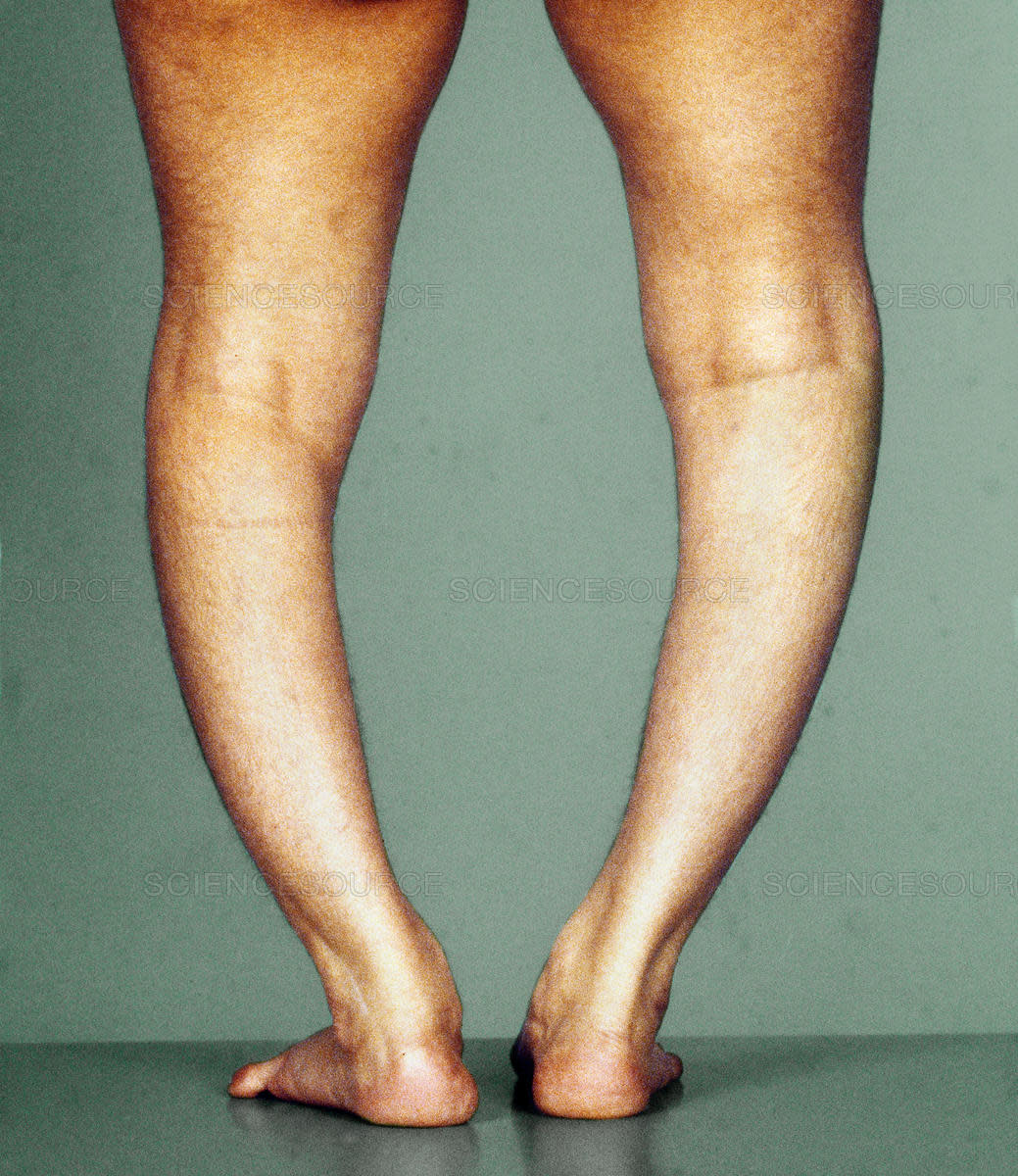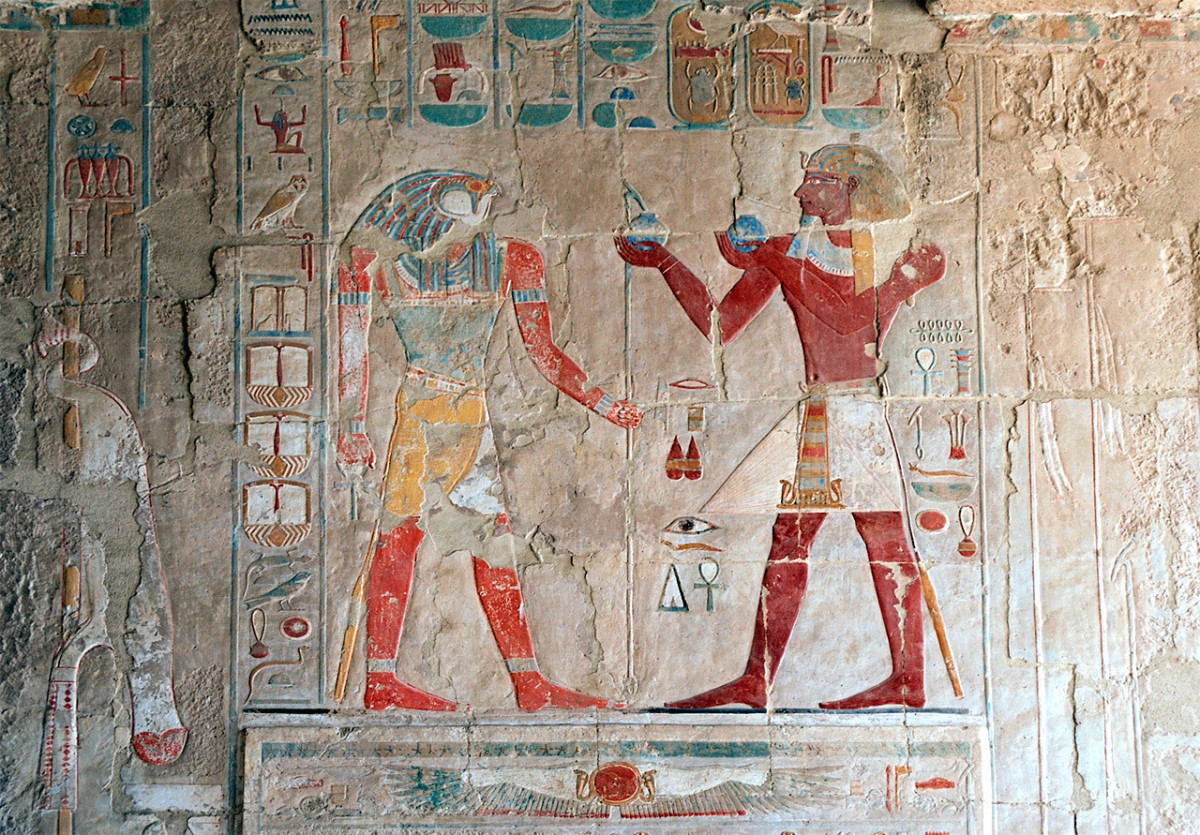Mercury: The Toxic Medical Treatment of Industrial France
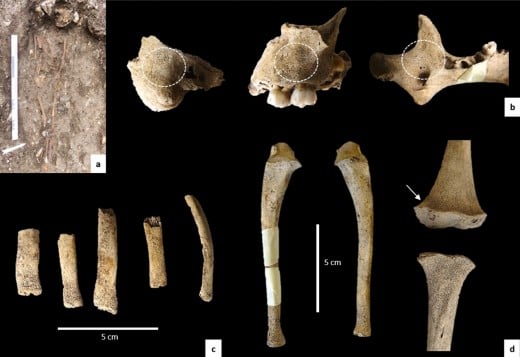
The first time I read about rickets was in high school biology class. We were going over our textbook when we came to a section on vitamin deficiencies and their effects. The section showed an image of a young child with bent legs and a bloated stomach from chronic hunger looking into the camera.
The first time I heard about scurvy was from a movie in which pirates were losing their teeth and had bleeding gums. However, it wasn’t until I learned more about it in school that I learned this, too, was due to vitamin deficiency, specifically vitamin D and C deficiencies.
Early signs of rickets and scurvy are relatively easily treated today with supplements and foods rich in vitamin D. However, this was not always the case.
A recent study published in the International Journal of Paleopathology examined the skeletal remains of a child who lived in the mid-19th century. From the child’s bones, it was clear he suffered from rickets and scurvy. The treatment?
Mercury.
The Advent of Industrialization
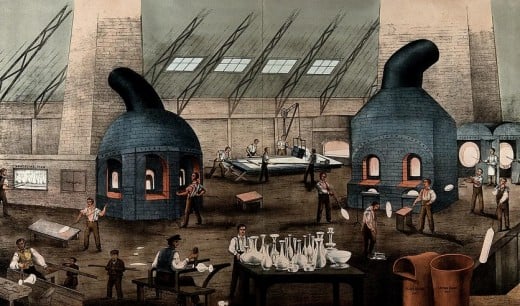
Industrialization was a complex and long process. From history textbooks, it sometimes seems like people woke up one morning and were in the midst of an industrial world. However, it was a transitional period with many social, economic, scientific, environmental, technological, and medical changes.
Industrialization began in the UK in the 18th century (ca. 1760s) and spread to continental Europe and the USA by the 19th century.
In France, it took place in two phases between 1830 and 1914.
The rapid growth of science and technology, driven by industrialization, has led to the development of various advanced medical systems and public health policies. Industrialization saw the invention of the first antibiotics (penicillin in 1928), early anesthetics (e.g., chloroform in 1847), and the first vaccine (smallpox in 1796), as well as allowed medical instruments (scalpels, microscope lenses, test tubes, etc.) to be produced more quickly.
These inventions led to an improved quality of life, such as higher birth rates, reduced infant mortality, longer life expectancies, and reduced death rates due to infectious diseases.
However, this was not the case for all sections of the population. Industrialization also had an uglier side.
Factories in every nook and cranny led to increased air pollution, overpopulation in urban areas, and child labor in factories and coal mines.
In fact, air pollution was so great that it even caused evolutionary change. The Peppered moth (Biston betularia), a rather famous example, is a snow-white moth with black spots on its wings, commonly found in Britain and Ireland.
During industrialization, natural selection favored the naturally occurring genetic mutation that led some moths to have black wings. Why?
While white and black-spotted moths can easily camouflage against lichen-covered trees, black moths became more common in cities and towns where the walls and tree trunks had become black from excessive coal fires and sooty air pollution.
White moths only came to dominate the cities and towns of Britain again in the mid-twentieth century when controls were introduced, which reduced air pollution, and thus, both walls and trees became cleaner and whiter again.
Humans, of course, also had to contend with other negative aspects of industrialization. Overcrowded urban areas meant less access to nutritional resources. Working in factories and the constant sooty air limited exposure to the sun, which ultimately led to an increasing prevalence of deficiency diseases such as rickets and scurvy, particularly among the lower to middle classes.
Despite knowing this period in human history led to various environmental, medical, and paleoepidemiological (study of past conditions of diseases and health) changes, little attention has been given to the actual evolution of treating these diseases.
‘Bioanthropologists in France have done relatively little research into this period. It was during a previous project, published by A. Colombo and other colleagues in 2021, to understand these health conditions in France, using a paleoepidemiological approach of rickets during this transitional period, based on anthropological data and historical archives, that they identified mercury as a common treatment for rickets. We, therefore, wanted to find out whether it was possible to detect mercury in skeletal mineral structures and whether it could be interpreted as a treatment for rickets,’ said PhD candidate Alexandra Zinn and Dr. Antony Colombo in a joint statement.
Rickets and Scurvy
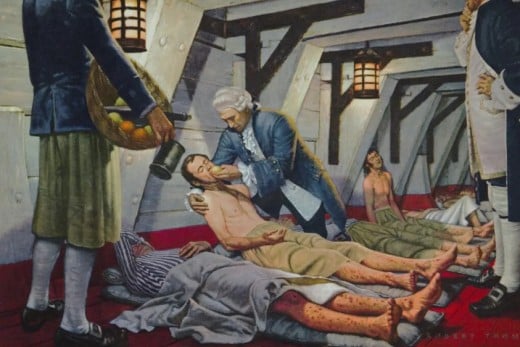
Before we continue, how about I tell you a bit more about what rickets and scurvy are?
Rickets is a childhood disease resulting from severe vitamin D deficiency that prevents the proper mineralization (hardening) of bone, also making them more porous bones. This, in turn, leads to skeletal deformities such as bowed legs, which ‘bend’ under the body’s weight.
Vitamin D is primarily produced in the skin when exposed to sunlight but can also be supplemented in the diet in small amounts (i.e., fatty fish, cod liver oil, and egg yolks).
Many modern people, myself included, have a mild vitamin D deficiency from lack of sunlight exposure. Usually, because we spend all of our work and free time cooped up indoors, away from the sun like vampires…
Scurvy, on the other hand, is caused by vitamin C deficiency. Severe vitamin C deficiency, in turn, leads to the production of poor-quality collagen, which weakens the connective tissues such as the walls of blood vessels; hence, one of the symptoms of scurvy is hemorrhagic phenomena (aka. excessive bleeding, including bleeding of the gums). If left untreated, it can lead to death.
The two diseases can co-occur, meaning if you have one, you can have the other.
According to medical literature from the late 17th century to the early 20th century, various treatments can be used for these diseases. These include various plant mixtures and treatments, including metals; one metal in particular was relatively common, namely mercury.
Mercury: Cure or Poison?

Mercury, at room temperature, is a silver liquid substance. Today, it is recognized as a global pollutant and an incredibly toxic heavy metal without a known biological function/benefit.
For centuries, the world over, it was used as a medicinal substance to prolong life and treat diseases. Zinn and Dr. Colombo elaborate,
‘There is a real paradox between mercury’s high toxicity (that we know today) and its historical appeal. In the past, mercury was seen as magical and esoteric. More than 2,000 years ago, mercury was already being used in Greek, Arab, Chinese, and Egyptian medicine, particularly for treating skin and venereal diseases. Its use as a medicine is evidenced by ancient Chinese, Egyptian, Greek, and Arabic medical reports.’
I first heard of mercury in a documentary about the ancient Chinese Emperor Shi Hunagdi (ca. 260–210 BCE). He is widely known as the ‘first emperor’ and founder of the Qin dynasty.
However, in his later life, he was reported as having increasingly erratic behavior.
Fearing death, or wanting to rule for all eternity, or perhaps a bit of both, Shi Huangdi was obsessed with finding the key to immortality. Many times, he searched for the Elixir of Life. According to Sima Qian, an early Han historian (ca. 145–86 BC) who did live a century after the emperor’s demise, reported the court doctors administered the emperor with pills made of mercury. It was believed these, when eaten, would bestow upon the emperor great power and possibly an extended life. However, the lethal substance is believed to have killed him at age 50.
You may not know of Shi Hunagdi, but you most certainly have heard of his tomb, even if you didn’t realize it before. The famous Terra-Cotta Army is a collection of over 8,000 life-sized warrior statues that guard the emperor’s tomb.
While the tomb itself has not been opened, it has been reported that it was filled with mercury, and tests done around the tomb mound have confirmed significantly high levels of the lethal metal.
Many centuries after the demise of Shi Huangdi, we humans continued to use mercury.
‘For a long time, rickets was considered a syndrome linked to other diseases, including syphilis, which itself was treated with mercury-based preparations. This may partly explain why, from the 17th century onward, mercury was prescribed to treat rickets (as syrups, pills, ointments, fumigations),’ said Zinn and Dr. Colombo.
Mercury treatments took a variety of forms, including syrups such as the so-called Bellet or Cuisinier syrups, which were special ointments and plasters containing a toxic mixture of mercury nitrate salt, hemlock, and opium used to alleviate friction.
Others suggested ingesting mercury chloride grains, while others still pioneered mercury administration via fumigation in heated chambers using cinnabar (crude mercury sulfide).
Mercury was used not just to treat rickets and scurvy, but it was also recommended to treat nurses and their sick patients, including children, infants, and pregnant women.
Regardless of how it was administered, ‘mercury treatments were painful and exhausting, leading patients to experience unwanted effects, including asphyxia, dizziness, delirium, tooth loss, and “mercurial glossitis” (inflammation of the tongue due to mercury exposure). Usually, the treatment was considered complete when excessive salivation appeared, which could be taken as an encouraging sign that the disease was being expelled (assuming the patient had not died before).’
However, mercury alone was not the only treatment for these diseases, and some alternatives existed.
‘The introduction of a product does not mean that it has been widely used. In France, the general use of cod liver oil as a treatment for rickets seems to have begun after the mid-19th century, without knowing why it was effective (vitamin D was discovered in 1922).’
For those that did take mercury, depending on the duration, dosage, and method of administration (which changed its chemical form), mercury would be absorbed differently in the body.
Paleopharmacology is a new field of research that aims to identify medicinal substances and plants used in ancient cultures. For Zinn and Dr. Colombo, this meant analyzing the human remains from an 18th-19th century French cemetery.
The Child of Rue Thubeuf

The archaeological site of Rue Thubeuf is located in Rouen, France. During the Industrial Revolution, it was a city characterized by poor sunlight exposure and a high risk of vitamin D deficiency.
Archaeological excavations were undertaken at the nearby necropolis at Saint-Gervais Priory and its church. The necropolis contained burials dating as far back as medieval times. However, the inner limits of the Saint-Gervais parish cemetery were used later, from 1780 to 1883.
Excavations revealed 53 burials, 18 of which were studied. One of them, individual SP5, was of particular interest.
Initially interred in a coffin, the burial contained the remains of a 3–4-year-old child.
Using physical analysis, micro-CT scanning, X-ray fluorescence, and cold vapor atomic absorption spectrometry (sensitive chemical detection method), the researchers were able to determine the child had suffered from both rickets and scurvy and had abnormally high levels of mercury in his bones and teeth.
From the child’s teeth, it was known that this child had its first bout of vitamin D deficiency in the first few months of life (between birth and 6 months). However, the deficiency was unlikely severe enough at the time to have been the cause of the later bone modifications and diseases with which it later died.
A more severe episode of deficiency was observed around age 3, and the likely development of scurvy.
This deficiency was likely treated with mercury.
The hypothesis was put forward after other sources of mercury contamination or introduction into the body were ruled out.
Technically, mercury in the child’s bones could have gotten there through a number of ways: environmental contamination of the bones, contaminated food, occupational/repeated exposure from mines or crafting activities, or through medicinal means.
Environmental contamination was quickly ruled out, as the geology of Rouen does not contain mercury-rich minerals or other materials.
Other contamination, such as through mercury-using occupations in the area, was also unlikely. During the 19th century, Rouen was known as the ‘cotton parish,’ producing “rouenneries” (i.e., painted cotton canvases), which were hung in “greniers à étentes” (i.e., drying sheds). While the coloring of cotton fabrics did involve metallic substances, mercury was not used in this craft as it was not able to dye or fix colors to textiles.
It is possible that crafts such as the production of earthenware, more specifically mercury application during gilding and enameling processes, could have exposed the child to mercury. However, workshops for these crafts were located outside Saint-Gervais, on the left bank of the Seine River, making it unlikely to be the source of mercury contamination.
Mirror and hat factories also often used mercury. It was particularly important in giving mirrors their reflective properties, and hat felt production. From archival research, it is known that some mirror and hat factories were on the perimeter of the archaeological site. However, though mercury contamination of working adults in this area remains possible, it is unlikely that very young children were exposed to the same extent.
Given how young he was, 3–4 years, it is generally unlikely that exposure to mercury due to occupation/labor conditions led to mercury poisoning.
Food could have been another source of mercury. However, the only food source that the child may have been exposed to with high levels of mercury is the methylmercury in fish. This was ruled out as contamination of fish stocks arose with industrialization and large-scale mercury emissions in the later 20th century (much too late to have affected the child).
This left only one more option. The child was administered mercury medicine.
Mercury in the child’s bones and teeth showed different concentrations. This is significant as teeth and bones grow differently. While bones are remodeled throughout your life (meaning old bone cells are replaced by new ones all the time), a single tooth will grow once, after which it does not remodel. As such, they record different things.
Teeth are often great indicators of lifestyle, health, and diet in early life. Meanwhile, bone gives a better overview of life (this is a VERY simplistic explanation, but it works for now).
The child’s bones showed greater concentrations of mercury than his teeth. It is likely partially because bones are porous and vascularized, meaning they can absorb mercury faster and more thoroughly than teeth.
The absence of enamel growth anomalies and the lower mercury levels in the tooth suggest that prolonged mercury treatment is unlikely for this child. Instead, the findings indicate that the child likely received mercury treatment in the last few months of life, resulting in severe mercury poisoning.
Conclusion
The study by Zinn and her colleagues is one of only a handful of studies researching the treatment of diseases in France during the Industrial Revolution. What remedies did people use, and why and when did new remedies arise?
How did the people get afflicted with the various diseases and ailments that arose during and sometimes as a consequence of the Industrial Revolution?
The study by Zinn and her colleagues provides some insights into the evolution of paleoepidemiology in 18th- 19th-century France and into the short life of a child.
More remains from Saint-Gervais and other sites are to be analyzed to see how prolific the treatment of mercury was.
I, for one, am very happy I need not ingest mercury pills for my vitamin D deficiency. Although, that being said, it is about time I go sit in the sun again, doctor’s orders.
Do you think the child died from the mercury or from the deficiencies? What other weird, useless, or deadly old remedies do you know of?
Let me know your thoughts, and if you’d like to support me further, why not Buy Me A Coffee
References
- Berit, A., & Strandskogen, R. (2015). Lifelines in world history: The ancient world, the medieval world, the early modern world, the modern world. Routledge.
- Butterfly Conservation. (n.d.). Peppered moth and natural selection. Butterfly Conservation. Retrieved March 21, 2025, from https://butterfly-conservation.org/moths/why-moths-matter/amazing-moths/peppered-moth-and-natural-selection
- Zinn, A., Thomann, A., Lefrais, Y., Dutour, O., & Colombo, A. (2025). Archeometric detection of mercury: A paleopharmacological case study of skeletal remains of a child with vitamin deficiencies (Rouen, France, late 18–19th centuries). International Journal of Paleopathology, 49, 29–36. https://doi.org/10.1016/j.ijpp.2025.02.006
© 2025 Sandee Oster


